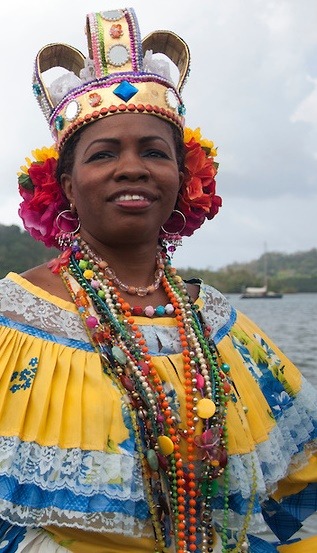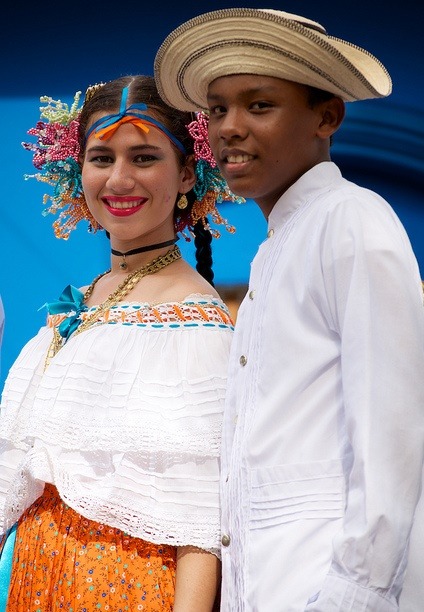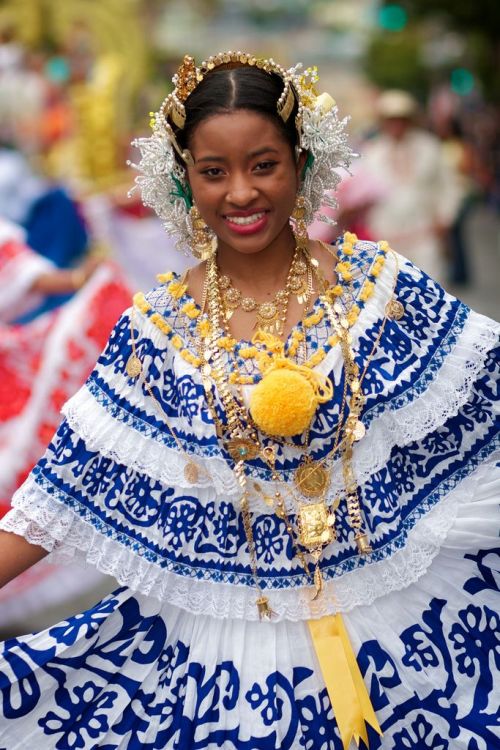The Pollera and Somberero Pintado: Symbols of Panamanian CultureLa PolleraRefers to the traditional
The Pollera and Somberero Pintado: Symbols of Panamanian CultureLa PolleraRefers to the traditional costume of Panama worn by women consisting of a skirt and a blouse. Its origins are that of Spanish clothing worn by peasant women in the seventeenth century. The most iconic pollera is that of the pollera de gala; its development began when upper-class Spanish women started settling in the Americas. Since their lavish clothing was unsuitable for the tropical climate, they would appropriate the dress of their [Spanish] servants. However to make them appear more luxurious they would decorate the garments with lavish embroidery and lace. This type of pollera was eventually adopted to the white criollo and mestizo population; and to this day is seen as a national symbol of Panama. Traditionally a woman owns two polleras in her life; one during childhood and the other when she becomes an adult. Typically polleras de gala are handmade of white linen and embroidered with colorful patterns such as flowers and fruit. However, there are many different variations of polleras outside of the pollera de gala, and differences base on region. Another common type of the pollera is that of the pollera congo, with its origins among the Afro-Colonial population of Colón. The most common style of the pollera congo is a colorful patchwork one made by the use old fabrics, and it reflects the polleras worn by African women during the days of slavery. A woman who wears a pollera is referred to as an empollerada.Polleras are usually accompanied by jewelry and accessories. The most common ones are the peinetas and tembleques. Peinetas are golden tortoise-shaped combs that surround the head like a halo, while tembleques are ornaments made of wire, pearls, or crystals; attached to the peinetas. These two accessories are often passed down by families as heirlooms.El Sombrero PintadoIs a traditional Panamanian hat most commonly worn by men, but occasionally by women as well. Recognized by its distinctive pattern of white and black rings, its origins are in the province of Coclé, however these days its seen as a national icon similar to pollera de gala. It is handwoven using the fibers of plants bleached in the sun; the rings that are black are made by using an Indigenous method of boiling fibers with chisná bush leafs, which cause a natural black dye. The cost of a hat is based on the number of rings, and hats with more than twenty rings can take up to a month to make. -- source link
Tumblr Blog : latin-american-diversity.tumblr.com
#panama#caribbean#latinx#mestizo#folk costumes#afro latino









